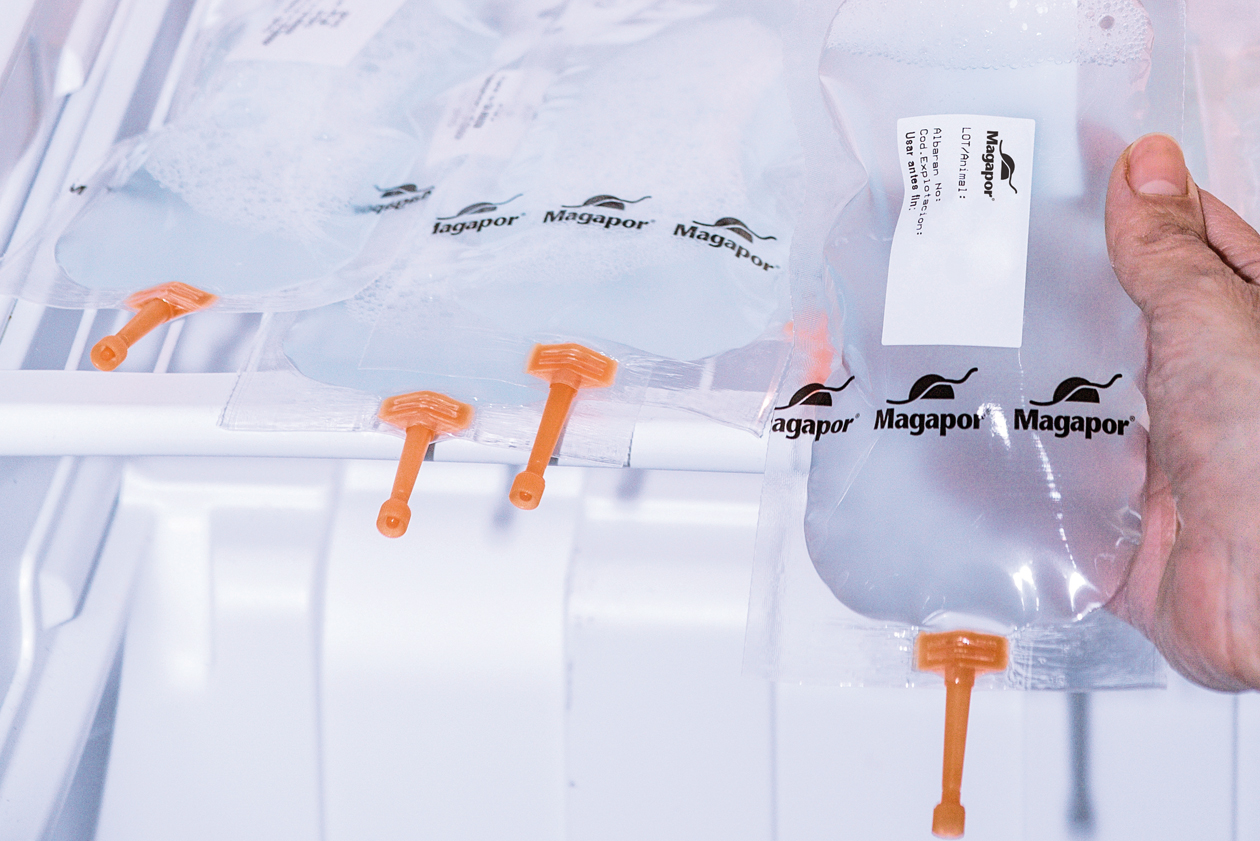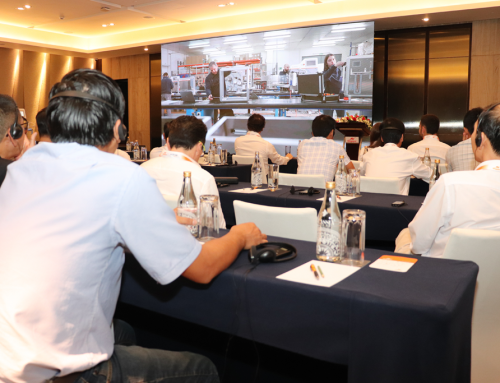Welcome again to our web-blog!!
According to what we promised, in this new entry our colleague Joaquin Miguel addresses on-farm receipt of the semen doses and their preservation in the facilities, giving some advice for the right management during these stages.
On-farm receipt of the doses
Doses receipt is a very important moment as it entails both the surveillance of biosecurity on farm and the maintenance of the preservation temperature.
For this, it would be highly advisable to build some kind of hut /cabin or small room with a preservation chamber that would allow the seminal doses to be left at any time and would avoid entering the farm. If it is not possible, any alert system could be installed for the farm staff to go out and pick up the parcel/package.
Some authors state that at least 90% of deliveries must be put in the preservation chamber in less than 15 minutes.
Nowadays there are already companies that have traceability systems to let farmers know where their seminal doses are, their temperature, the delivery time on the farm, etc. All these with the aim of showing constant transparency to their customers on the condition of their product.
Preservation on farm
Once the doses are in the storage chamber, we must bear in mind the following pieces of advice:
- Use chambers specifically designed for the preservation of semen doses: able to heat or cool, with a display showing the temperature (accuracy ±1ºC) and one alarm system alerting in case the temperature is out of the desired range.
- Place the chamber in a room in an ambient temperature of 15-25ºC, which will allow it to work properly and avoid possible breakage. We have to take into account that if the ambient temperature is 35ºC it will be very difficult to keep the storage chamber at 15-17ºC.
- Avoid exposing the chamber to aggressive ambient (dust, humidity …)
- Plug the preservation chamber into an outlet where nothing else will be plugged. Install a surge protector and backup battery of the UPS to provide additional protection in the event of a power outage or over-voltage.
- Equip the preservation device with thermometers with maximum and minimum temperatures or data logger to continuously register temperature.
- Take the doses out of the bag or the wrapping where we receive them, and distribute them in the storage chamber (avoiding contact with its inner walls), to favour air circulation and thus allow the stabilization of the temperature in the event of any fluctuation during transport. It is recommended to deposit them in a horizontal position to ensure the recirculation of the air inside.
- Two chambers are better that one. This will allow to be more versatile in the event that one fails, for example due to the fact that high summer temperatures may make them break.
- The volume of the storage chamber should be 0.5-0.6 litres per semen dose.
A controversial aspect has been that of the rotation of the seminal doses. It is a practice routinely carried out on farms with the aim of preventing sperm sedimentation, in a medium considered “toxic” due to the accumulation of metabolic waste of the sperm cell.
To date, there are several publications dealing with the effect of rotation on the quality of seminal doses. Despite the fact that in the past it was believed to be beneficial (Rodríguez-Gil and Rigau (1995 ), the latest research has left evidence of the negative effect that this practice can have on seminal quality (Martin Schulze (2015), Fernando Bortolozzo (2017). It is also believed that it can favour the loss of CO2 from the liquid phase to the air in the seminal doses, leading to accelerated alkalinization of the medium. This occurs with greater intensity with the use of short-term extenders, since buffers in their composition are simpler than in high-performance extenders.
All these factors that we have addressed throughout the technical entries of the blog must be taken into account, since nowadays we are in a very wide production framework, with completely different scenarios depending on multiple factors. Therefore, each company must adapt to the surrounding variables and adopt the necessary strategies to obtain the desired quality standards for its final product, the semen dose.
Below you can see the bibliography that Joaquin has reviewed for this entry, and the whole Marketing department want to seize this opportunity to thank him for his prolific contributions to this blog.
We hope you can take advantage of this information!
Bibliography:
Menegat, M. B., Mellagi, A. P. G., Bortolin, R. C., Menezes, T. A., Vargas, A. R., Bernardi, M. L., Wentz, I., Gelain, D. P., Moreira, J. C. F., & Bortolozzo, F. P. (2017). Sperm quality and oxidative status as affected by homogenization of liquid-stored boar semen diluted in short- and long-term extenders. Animal Reproduction Science, 179, 67–79. https://doi.org/10.1016/j.anireprosci.2017.02.003
Rodríguez-Gil, J. E., and T. Rigau. 1995. “Effects of Slight Agitation on the Quality of Refrigerated Boar Sperm.” Animal Reproduction Science 39(2): 141–46. Schulze, M., K. Rüdiger, and D. Waberski. 2015. “Rotation of Boar Semen Doses During Storage Affects Sperm Quality.” Reproduction in Domestic Animals 50(4): 684–87. http://doi.wiley.com/10.1111/rda.12532
https://www.pig333.com/articles/optimal-on-farm-semen-doses-management-key-points-to-control_13857/
https://www.nationalhogfarmer.com/mag/farming_boar_semen_handle




